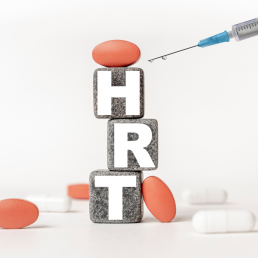
The National Transgender Discrimination Survey Report on Health and Health Care recorded at least 80% of transgender people have either taken gender-affirming hormone therapy (GAHT) or want to take GAHT at some point.¹ We sat down to learn from Joelle Jacoski about the drug delivery challenges of taking GAHT.
“I came out as non-binary about four months ago and started using they/them pronouns. This means that I don’t identify as a man or woman. Every non-binary person’s experience of gender is unique, but for me, I feel drawn to androgeny.
Transitioning is a huge decision. For some people, there’s little or no hesitation in taking the plunge, but for many it takes a lot of contemplation. Not all transgender or non-binary individuals choose to go through hormone replacement therapy (HRT), but those who do experience significant physical, emotional, and sexual changes in their bodies. For example, a person assigned female at birth (AFAB) who is taking testosterone treatments may experience increased facial hair, increased libido, and increased aggression. A person assigned male at birth (AMAB) who is taking estrogen treatments may experience a decrease in body hair, decreased libido, and they may experience emotions differently than they have in the past.
For transitioning individuals taking estrogen, the most common route of administration is orally or through a skin patch. Injectable estrogen tends to cause “very high and fluctuating estrogen levels which can cause mood swings, weight gain, hot flashes, anxiety or migraines, so it is usually not prescribed except in very unique circumstances (UCSF).” Also, because there isn’t a huge demand for injectable estrogen, it can be difficult to obtain. However, injectable testosterone is another story.
Testosterone is most commonly prescribed as a weekly or biweekly injection, though this is not the only option. Some transitioning individuals take testosterone through transdermal gel or skin patch. The changes that happen to an individual’s body on testosterone can be very daunting and overwhelming, and the gel and patch allow for a slower transition. However, these skin-based options require daily treatment and pretty strict personal hygiene standards. The gel has to be applied to clean, dry skin and allowed to dry for several hours before another person can touch the application area without being at risk of absorbing testosterone into their own body. Plenty of people choose to start their transition with the gel or patch and switch to injections later in their journey. This is likely the path I will take. Going through HRT as an adult is akin to going through a second puberty, and all of us adults understand how rough that was the first time. Starting with a low dose of testosterone and gradually increasing will slow the rate of this second puberty, giving me time to cope with bodily changes as they begin to occur.
Gel and patch options aside, weekly injections are clearly the most low-maintenance form of testosterone HRT and can be more accessible for disabled folks. Injectable testosterone is usually prescribed intramuscularly, though studies have shown that subcutaneous injections are just as effective at maintaining testosterone levels as the intramuscular method.² The thing that these injection methods have in common is obviously the use of a needle, and a lot of people have an aversion to needles. Personally, I am not afraid of needles, but still the idea of stabbing myself once a week is pretty offputting. Besides that, having needles in the home can be unsettling if there are kids and/or pets in the household. Most transitioning people on testosterone are able to give themselves injections despite any fear of needles, but the process can be so anxiety-producing. Trans and non-binary individuals already experience enough anxiety; we don’t need to feel anxious about taking the medications that make us feel like our true selves.
Needle-free injections would be revolutionary for transitioning individuals on testosterone. Not having needles around kids and pets make for a safer home, and it takes away most of the anxiety of injections. Having access to a faster, less painful subcutaneous injection would likely improve many transitioning people’s experiences. Personally, I am greatly looking forward to having access to this technology in the future, as I believe it will lead to a purely positive experience with HRT.”
¹ Grant JM, Mottet LA, Tanis J, Herman JL, Harrison J, Keisling M. National transgender discrimination survey report on health and health care. Natl Cent Transgender Equal Natl Gay Lesbian Task Force. 2010;1:1–23.
² McFarland, Julie et al. “Serum Testosterone Concentrations Remain Stable Between Injections in Patients Receiving Subcutaneous Testosterone.” Journal of the Endocrine Society vol. 1,8 1095-1103. 21 Jul. 2017, doi:10.1210/js.2017-00148
Portal’s platform is in development and not available for sale or use.

